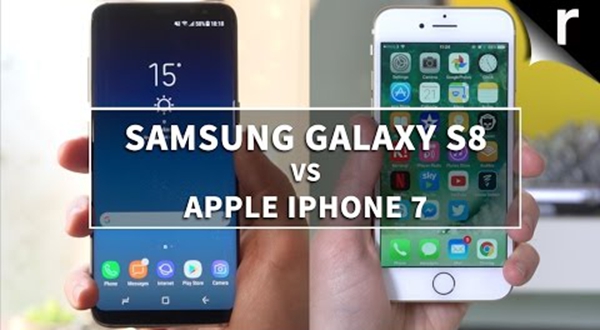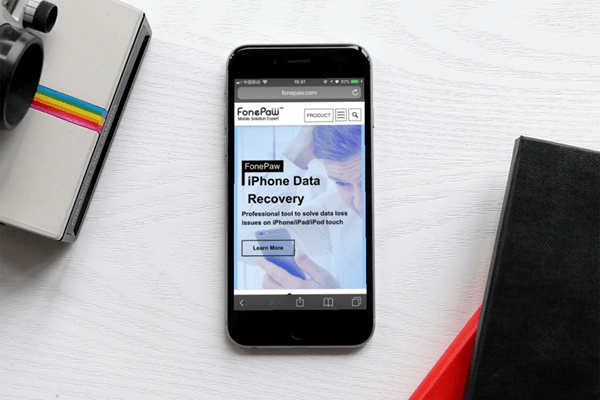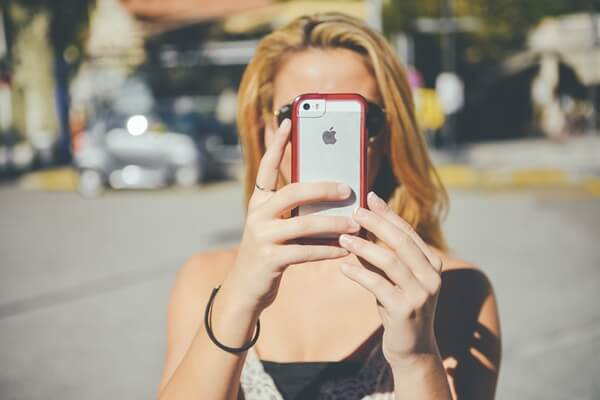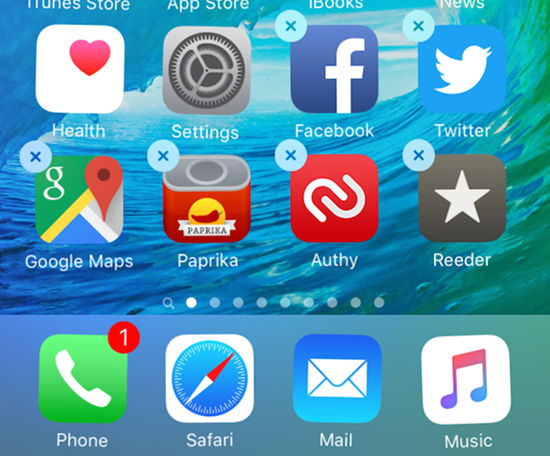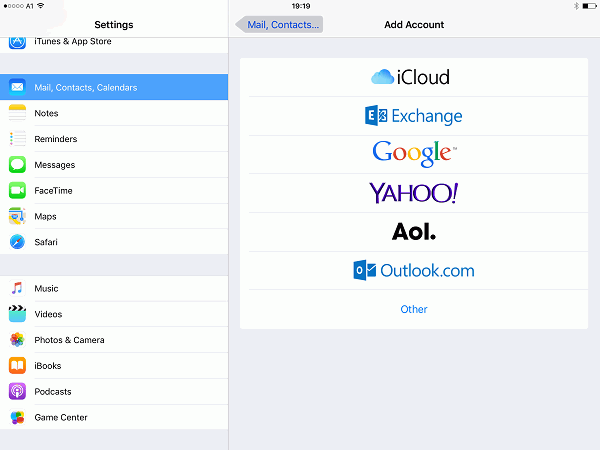Samsung S8 VS iPhone 7: Will You Want to Switch From iOS to Android?
Samsung has just announced the Samsung Galaxy S8 smartphone. It's the South Korean manufacturer's key smartphone for 2017 as it tries to look past the disastrous Galaxy Note 7, but also as it continues to take the battle to bitter arch-rival Apple.
For its part, Apple announced the iPhone 7 on 8 September 2016, which is a fair span of time in the fast-paced world of premium smartphones. It has been a wild success for Apple, at least partially reversing the trend towards Android phones worldwide and seeing strong sales in Australia.
How does it compare against Samsung's brand-new phone? Will you want to switch from iOS to Android after reading the comparison?
- Samsung S8 vs iPhone 8, Which One Should Be Chosen?
- Samsung S8 vs Samsung s7, What Have Been Improved?
1. Display
Samsung Galaxy S8
Before we dive into details though, it's worth noting that the Samsung Galaxy S8 display has taken the title of "best smartphone screen" in DisplayMate's in-depth testing - putting it above all others on the market. In short then, the screen on the Galaxy S8 is very, very good.
The 5.8-inch Super AMOLED display is clear, bright and colorful, with a QHD resolution (and a little bit more, thanks to the screen being extended further down the chassis and now offering an 18.5:9 aspect ratio).
However, it's worth noting that the QHD element has been reduced by default: you'll be looking at a Full HD offering to start with, and you'll need to choose to enable the full resolution capability in settings.
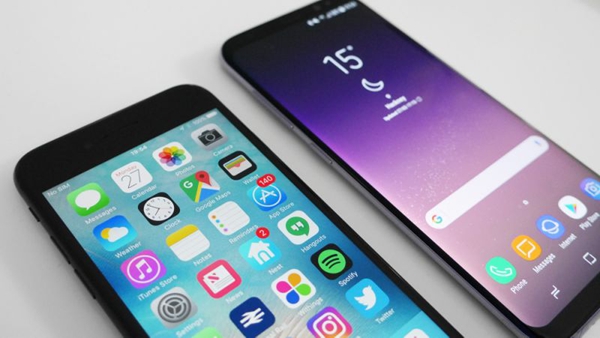
iPhone 7
3D Touch is still present on the iPhone 7's display, and the display itself is improved. It's not as insane as the 2K and 4K OLED panels that have been popping up on Android phones, but it's a sharp, bright, and beautiful LCD, which is very nice to look at. My review unit is also noticeably warmer than the iPhone 6S display, which I've come to appreciate.
You won't notice it in most apps, but the display can show a wider range of colors now, which is really obvious when you look at photos taken by the iPhone 7's camera — which now also captures a wider range of colors.
Photos taken by the iPhone 7 look ridiculously good on the iPhone 7 display; you can tell the difference between a 7 photo and a 6S photo on the 7's screen almost instantly. That's the only place you'll really see the benefit of the new screen for now, but it's another place where app developers can really take advantage of powerful new hardware. Instagram has already announced an update to support wide color; let's hope others follow suit.
2. Processor
Samsung Galaxy S8
If history is going to repeat itself, we expect that Samsung will put one of its own Exynos chipsets in the international models of the Galaxy S8/S8+. This is what it has been doing for the past few years - a Snapdragon chipset for the USA, an Exynos one for the rest of the world. That Exynos one might be rumored Exynos 8895 chipset.
A report coming from China says that the chipset is being built in two variants: the Exynos 8895M and the Exynos 8895V. Both will be made by Samsung on the company's 10nm FinFET process. They are said to feature octa-core processors which combine four Exynos M2 CPU cores (clocked at up to 2.5GHz) and four Cortex A53 CPU cores (clocked at up to 1.7GHz).
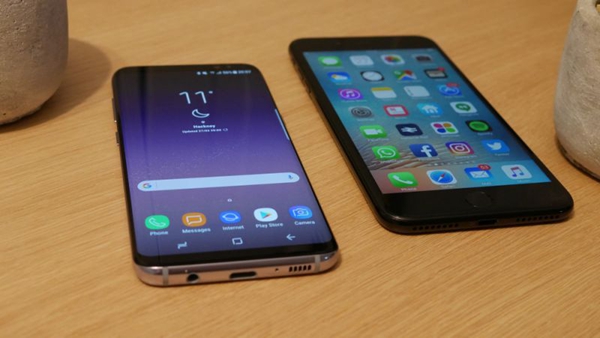
iPhone 7
iPhone 7 is supercharged by the most powerful chip ever in a smartphone. It's not just faster than any previous iPhone — it's also more efficient. That's because the A10 Fusion chip uses an all-new architecture that enables faster processing when you need it, and the ability to use even less power when you don't. And with the longest battery life ever in an iPhone, you can work at twice the speed of iPhone 6 and still enjoy more time between charges.
3. Camera
Samsung Galaxy S8
Front Camera: Turn on the selfie camera and take photos that everyone will want to share. Smart Auto Focus tracks faces, so whether you use your arm or a selfie stick, everyone in the shot will be in focus. And enhanced multi-frame image processing keeps all the selfies crisp and clear.
Rear Camera: The dark is no match for Galaxy S8 and S8+'s rear camera. The bright F1.7 lens and large 1.4µm pixels bring in more light when there's not enough around. So what you see is what you'll get in the shot.
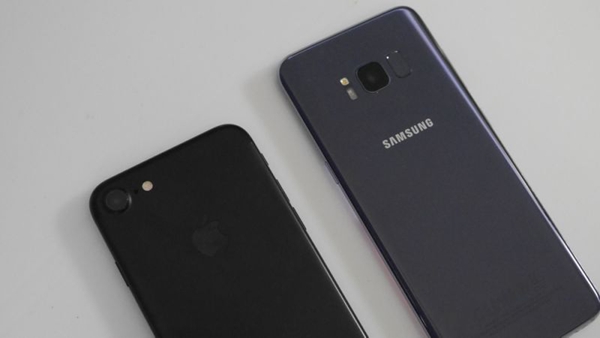
iPhone 7
iPhone 7 comes with optical image stabilization to reduce blur associated with motion and handshake. A sensor helps the lens counteract even the tiniest movement, allowing for up to 3x longer exposure compared to iPhone 6s.
A larger aperture allows up to 50 percent more light onto the camera sensor than iPhone 6s, further enhancing the camera's ability to take superb low-light photos. Teamed with the new six-element lens, the camera will deliver brighter, more detailed shots.
Four smart LEDs flash 50 percent brighter than iPhone 6s. The flash adjusts according to the color temperature of the environment, resulting in sharper, more brightly lit photos.
4. Battery
Samsung Galaxy S8
There's only a 3000mAh battery in the Samsung Galaxy S8, but that doesn't mean it's going to be a problem – the only issue we can see is that the longer screen that's on offer has more pixels to power, but with a CPU/GPU combination that's more powerful than before there are some efficiencies to be offered in terms of saving the battery life.
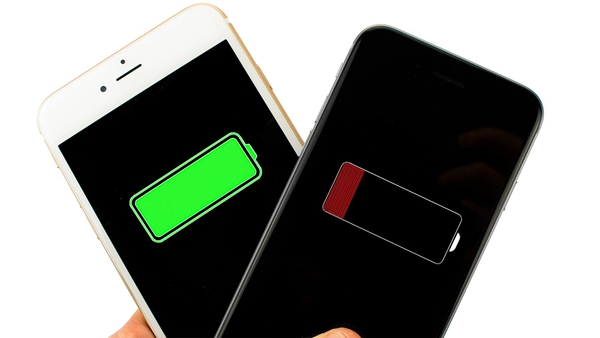
iPhone 7
Rather than having better battery life, the iPhone 7 has worse battery life than the iPhone 6S when new. No single app caused significant battery drain, I do not have the Facebook app installed and Low Power Mode made no appreciable difference in my testing when enabled at 20%.
To make matters worse, the iPhone 7 has the worst of all worlds: short battery life and tediously slow charging. Even using the 12W charger that came with the iPad Pro, it took well over two hours to fully charge the iPhone 7.
5. Price
Samsung Galaxy S8
Samsung has slapped the Galaxy S8 with a £689 SIM-free price tag, making it just £10 cheaper than the iPhone 7 with 128GB storage. Unsurprisingly, the Galaxy S8+ is even more expensive at £779 SIM-free.
However, UK retailer Unlocked-Mobiles is offering both smartphones cheaper than Samsung. The Galaxy S8 can be picked up for £674.99 SIM-free, and the Galaxy S8+ for £764.99.
iPhone 7
With all these advanced features, iPhone 7 falls between the price range of 800-900 USD depending upon different locations and GB memory. The Phone could be available in contract with mobile carriers but at this point of time it is pretty hard to predict which carrier will have the privilege.
With contract, the consumers will have to spend a couple of hundred dollar initially and the rest can be paid in due course as contract lasts.
6. Conclusion
It is always a tough choice to choose between flagship phones, while some guys who prefer mobile phone with big screen will prefer Samsung Galaxy S8, people who love phones with better performance and developed processor will opt for iPhone 7.
Apple is also planing to bring iPhone 8 and iPhone 8 Plus later this year, which are also one of the best contender of best mobile phone of 2017. We will update you soon with more details soon.
Here we have given you an overview with details of specifications of both devices, it is better if you choose the best device according to your preferences and choose for yourself, which is the better flagship device, Samsung Galaxy S8 or iPhone 7.


















